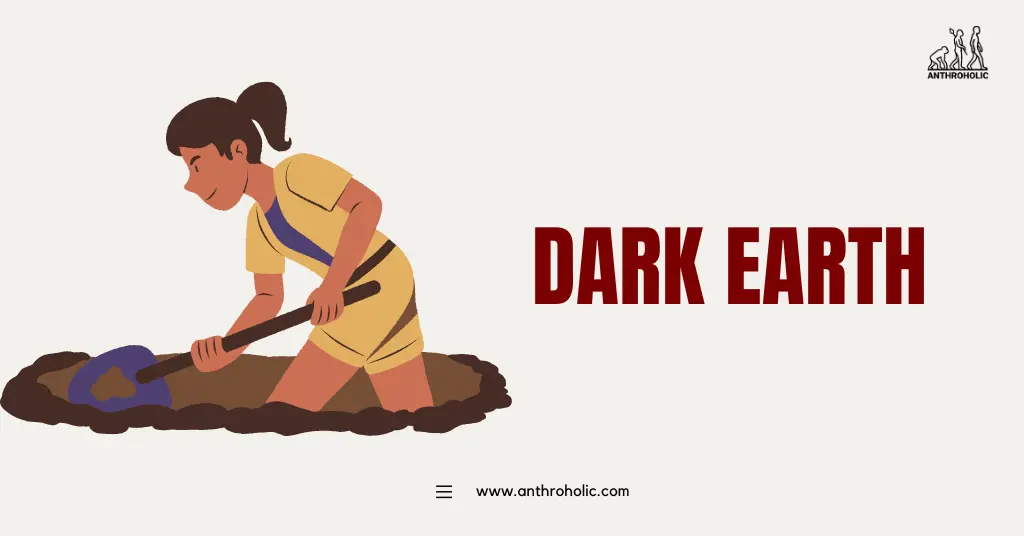AI Answer Evaluation Platform Live Now. Try Free Answer Evaluation Now
Dark Earth
Dark Earth, also known as terra preta or Amazonian black earth, is a type of soil found in the Amazon Basin, widely revered for its incredible fertility and carbon storage capabilities. This human-made soil is a fascinating testament to the innovative agriculture of ancient Amazonian civilizations, revealing critical lessons for contemporary agricultural and climate-change mitigation strategies [1].

The History and Origins of Dark Earth
The origin of dark earth has long been the subject of debate among archaeologists and soil scientists. The most widely accepted theory is that the soil was unintentionally created by pre-Columbian indigenous populations through the gradual depositing of organic and inorganic waste, including charred material, food waste, and human waste, over centuries.
Formation and Characteristics of Dark Earth
The formation of dark earth is attributed to a combination of pre-Columbian indigenous practices such as waste disposal and charcoal production. These activities, conducted over hundreds or even thousands of years, led to a soil rich in nutrients and organic matter.
Composition
Typically, the components of dark earth include:
- Biochar (charcoal used as a soil amendment)
- Bone and fish remains
- Manure
- Plant residues
Each component contributes to the overall fertility and carbon retention characteristics of the soil [2].
Physical and Chemical Properties
Dark earth soils are generally rich in nutrients such as nitrogen, phosphorus, and calcium, unlike the surrounding infertile soils in the region. Furthermore, dark earth soils are dark in color, a characteristic resulting from a high concentration of carbon in the form of biochar [3].
| Soil type | Nitrogen (%) | Phosphorus (mg/kg) | Calcium (mg/kg) |
|---|---|---|---|
| Dark Earth | 0.20 – 0.40 | 200 – 400 | 500 – 1000 |
| Surrounding | 0.05 – 0.15 | 30 – 70 | 200 – 500 |
The Role of Biochar
Biochar plays a central role in dark earth soils, contributing to their unique properties:
- Fertility Enhancement: Biochar has a porous structure that aids in water and nutrient retention, boosting soil fertility.
- Carbon Sequestration: When added to soil, biochar can remain stable for thousands of years, making it an effective tool for long-term carbon sequestration.
Implications for Modern Agriculture
Dark earth’s high fertility and carbon sequestration potential present exciting opportunities for modern agriculture.
- Sustainable Agriculture: By understanding and adopting the practices that create dark earth, we can improve soil fertility without relying on synthetic fertilizers, contributing to sustainable agriculture.
- Climate Change Mitigation: The use of biochar as a soil amendment can help sequester carbon, potentially playing a role in mitigating climate change.
Creation by Ancient Amazonians
Contrary to previous beliefs that the Amazon rainforest was untouched by humans, research suggests that ancient Amazonians modified their environment, creating dark earth through a mixture of agroforestry, waste composting, and slow-burning practices.
Modern Distribution and Utilization
Today, these dark earth soils can be found in scattered patches across the Amazon basin. They are prized by local farmers for their fertility, especially when compared to the typically nutrient-poor soils found elsewhere in the region.
Challenges in Replicating Dark Earth
While the potential benefits of dark earth are significant, the task of replicating its formation is not without challenges:
- Time-consuming process: Dark earth was created over centuries, a timeframe that is difficult to replicate in our fast-paced world.
- Resource-intensive: Producing biochar in large quantities requires significant resources, making it a challenge for smallholder farmers.
Future Research and Potential Solutions
In order to overcome the challenges in creating dark earth, various solutions and research directions are being pursued:
- Biochar Production Technology: Research is underway to develop cost-effective, small-scale biochar production systems.
- Policy and Incentives: Governments and organizations can provide incentives for farmers to adopt biochar and other sustainable soil management practices.
Conclusion
Dark earth holds lessons from the past, offering strategies for sustainable agriculture and climate change mitigation. While the replication of dark earth is not without its challenges, ongoing research and supportive policies could pave the way for widespread adoption of these ancient practices, leading us towards a more sustainable future.
References
[1] Glaser, B., Haumaier, L., Guggenberger, G., & Zech, W. (2001). The ‘Terra Preta’ phenomenon: a model for sustainable agriculture in the humid tropics. Naturwissenschaften, 88(1), 37-41.
[2] Sombroek, W., Ruivo, M. L., Fearnside, P. M., Glaser, B., & Lehmann, J. (2003). Amazonian Dark Earths: Origin, properties, management. Springer.
[3] Lehmann, J., da Silva, J. P., Steiner, C., Nehls, T., Zech, W., & Glaser, B. (2003). Nutrient availability and leaching in an archaeological Anthrosol and a Ferralsol of the Central Amazon basin: fertilizer, manure and charcoal amendments. Plant and Soil, 249(2), 343-357.
[4] Steiner, C., Teixeira, W. G., Lehmann, J., & Zech, W. (2004). Long term effects of manure, charcoal and mineral fertilization on crop production and fertility on a highly weathered Central Amazonian upland soil. Plant and soil, 291(1-2), 275-290.




